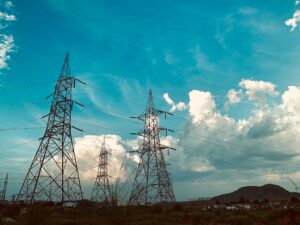 Competition in Electric Power—What Does the Record Say?
Competition in Electric Power—What Does the Record Say?
About 25 years ago the electric power industry was deep into debates over competition and monopoly. For most of the last century, nearly everyone agreed that monopoly was not only natural but even desirable in electric power as long as regulators ensured that the benefits of monopoly were shared with consumers.
Toward the end of the century, the conventional view was under challenge—rates were rising, the industry had seen a few major blackouts and technological growth stalled. Dissatisfaction with the regulated electric power industry was intensified by the apparent success of deregulatory reforms in the airline, telecommunication and other industries. In the 1990s, a coalition of industrial consumers and non-utility power producers, with help from academic critics of regulation, convinced federal and many state policymakers to open the electricity industry to competition.
Now rising power prices, winter weather failures and renewed concern over the ability of the industry to handle innovations on both the demand and supply side have brought industry structure back to the forefront. This time, unlike the 1990s, we have over two decades of experience with reforms. It is a good time to reflect on what we know and don’t know about competition and monopoly in the electric power industry.
Competitive Wholesale Markets Encourage Efficiency and Environmental Improvements
Market competition was expected to drive down costs, and it has in several respects. Research shows that competitive generators were associated with higher availability of nuclear power plants, lower costs at coal plants and substantial investment in highly efficient combined-cycle natural gas plants. Competitive generators better manage risk and have led to more cost-effective decisions regarding when to retire resources and when, and where, to build new generation.
Regulated utilities see savings from participation in regional transmission organizations (RTOs) from reserve sharing, better coordination of generation and transmission resources, and better use of low-cost generation assets. The Midcontinent Independent System Operator (MISO), which is mostly made up of regulated local power monopolies, calculates that its members enjoy benefits totaling over $3 billion annually.
The electric power industry in states with RTOs is also linked to reductions in air emissions. Markets tend to promote investment in new technologies while regulated firms will hold onto older generating units longer. In addition, unconventional resources like wind, storage and solar energy expand at a quicker rate and integrate more efficiently in competitive wholesale markets. When natural gas prices are low enough, new cleaner-burning natural gas plants outcompete coal-powered generation with fewer air emissions as a result.
Competition may also reduce political corruption, or so it seems after a string of corruption cases grabbed headlines in Ohio, Illinois, South Carolina and Florida. While Ohio and Illinois restructured, they both chose to let regulated distribution monopolies keep commercial ties to power generators serving in competitive markets. The result in Ohio was a regulated utility bribing state legislators to secure millions in payments to affiliated generating units failing in the competitive market.
Retail Competition Has Benefits, But Requires Sound Implementation
The record of retail competition over the last 25 years is decidedly mixed. Critics of competition often rightly note that states allowing retail customer choice have higher prices on average than states that remained under traditional regulation. However, most of the states that reformed did so precisely because they had higher prices on average back when they too were traditionally regulated. Average retail electric prices matched inflation in both retail choice and traditionally regulated states, leaving real power prices nearly unchanged from 2001 to 2021.
Texas has a reputation for allowing the most robust retail market, and research found that consumers with access to the retail market saw prices fall relative to consumers in the state who remained served by monopoly. When adjusted for inflation, data from the Energy Information Administration shows the price of electricity has fallen in Texas since the reforms were implemented in 2002. Questions were raised about the sustainability of the Texas model after the disastrous energy failures in February 2021, but the failures had nothing to do with retail competition.
Other than Texas, states with residential retail choice generally find their market dominated by default service rates overseen by regulators. Competitive retail providers mostly just aim to beat the default service rate rather than compete directly against each other, resulting in lackluster retail competition. This underscores the need for proper implementation of retail choice, which results in more accurate price signals and lower costs, enabling consumers to choose different products to suit their risk demand management preferences.
Interestingly, a 2022 analysis of prices in several retail choice states found that the cost associated with energy supplies had fallen in all cases but one, while costs associated with the still regulated transmission and distribution systems had risen in every single case. The regulated monopoly sector may be the biggest reason prices are rising in the retail choice states seeing higher rates.
What About the Future?
Retail competition is advantageous when properly implemented. When it is not, retail rates between competitive and monopoly industry structures may be a wash. States with retail competition still require regulatory oversight of monopoly transmission and distribution expenses. A few years ago the advice might have been that states should emulate Texas. Such advice will have to wait until after state policymakers decide how to reform the sector in response to the winter storm failures.
At the wholesale level, however, it is clear that competition brings greater efficiency in power supply, more reductions in air emissions and more rapid accommodation of new technologies. This is not a bad set of features given rapid industry changes, and even more rapid demands being placed on the industry by policymakers.
Michael Giberson is a senior fellow with the R Street Institute’s Energy & Environmental Policy team.